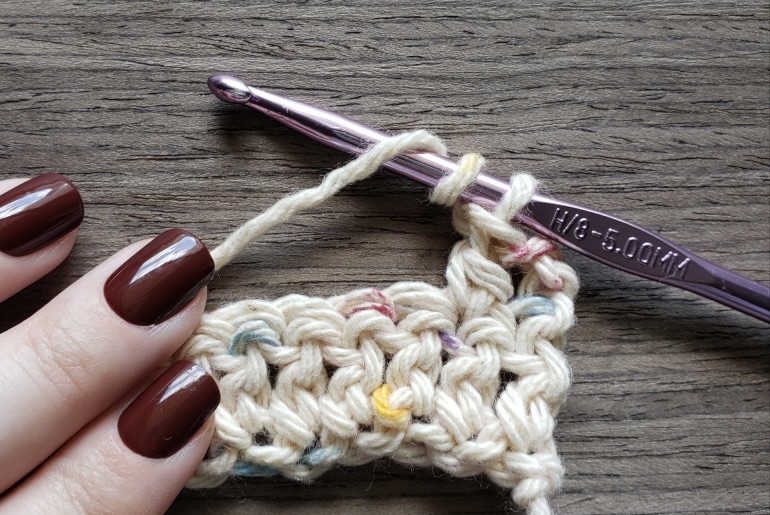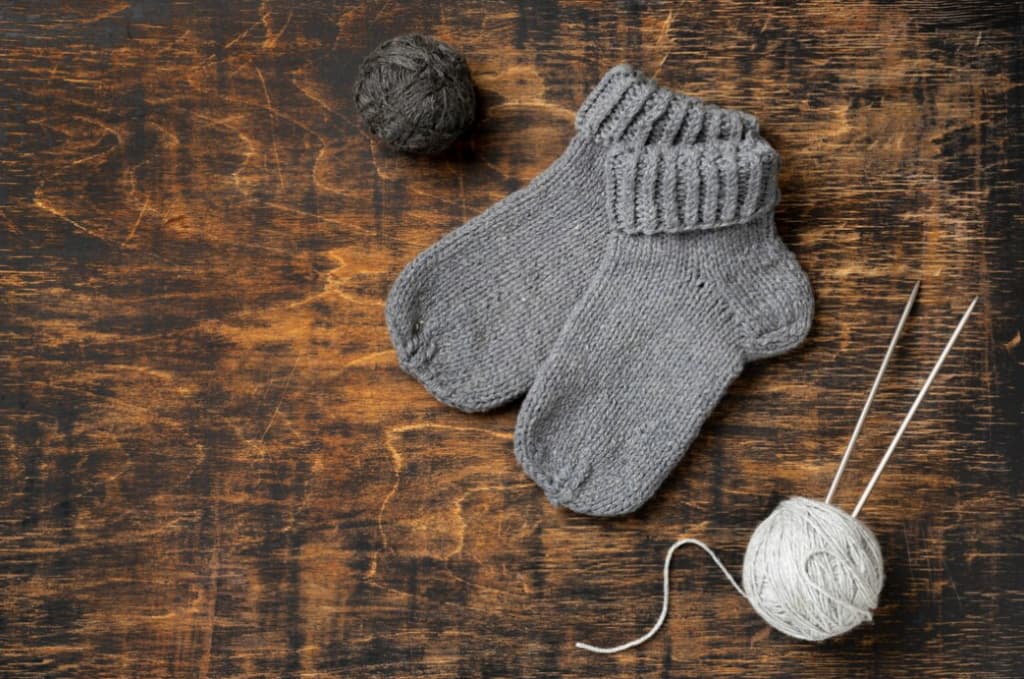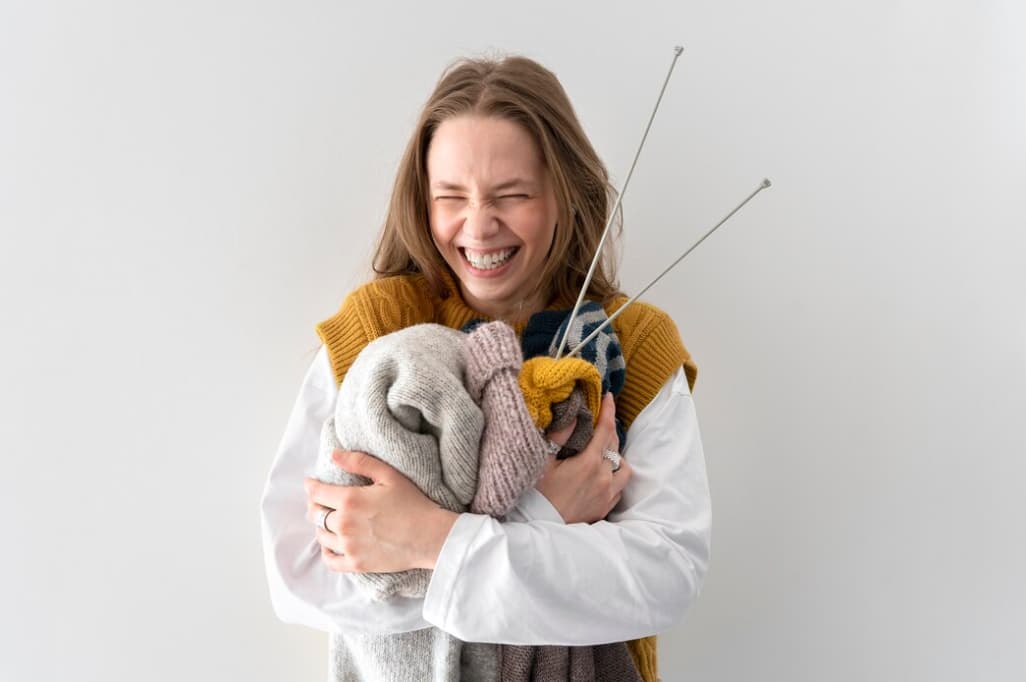The art of crocheting showcases a myriad of mesmerizing patterns and techniques. Amidst these, one that stands out for its captivating visual appeal and fun structure is the Treble Crochet Bobble (referred to as Double Treble Crochet Bobble in UK crochet terminology). This tutorial will guide you through each step of creating this intriguing stitch.
Understanding Treble Crochet Bobble
The Treble Crochet Bobble is an intricate play of loops and yarn that presents a delightful variation to the standard US Treble Crochet or UK Double Treble Crochet. Greater in width without added height, these bobbles owe their unique shape to the extra loops maneuvered on the hook before the stitch’s completion.
A Close Kin to the Puff Stitch & Double Crochet Bobble
If you’re familiar with other crochet techniques, you might observe a resemblance between the bobble stitch and its counterparts, namely the Puff Stitch and the Double Crochet Bobble. The primary difference lies in the Treble Crochet Bobble’s slightly more elevated stature, which imparts an engaging dimension to any crochet creation.
Treble Crochet Bobble, denoted as TR BO, unfurls its enchanting tapestry as follows
Phase 1: Commence with a requisite minimum of one loop adorning your crochet hook, ensconced within an active crochet project awaiting your expert touch. Chart your course to the stitch designated by the pattern, where the TR BO shall find its place.
Phase 2: Commence by orchestrating a ballet of the working yarn, gracefully swathing it from the posterior to the anterior over the crochet hook, not once, but twice. In the lexicon of crochet, this elegant maneuver is known as a “yarn-over.” Behold, for three loops now grace your crochet hook, like celestial dancers.
Phase 3: Venture forth, plunge the crochet hook into the next stitch (or space, contingent upon the dictates of your crochet pattern). Initiate a melodious pas de deux with the stitch or space, as the yarn-over interlaces with the stitch in an ethereal harmony. The result? Four loops intertwine upon your crochet hook, a symphony of yarn and hook.
Phase 4: Progress further along this exquisite dance. Execute a yarn-over and draw the thread through the first duo of loops gracing your crochet hook. What once was four is now whittled down to three, like a crescendo in the making.
Phase 5: As the dance continues, yet another yarn-over is executed, this time consummated with the next two loops on your crochet hook. Witness the transformation as the trio of loops diminishes to a duet.
Phase 6: The elegance persists as the working yarn, like a ribbon in the wind, elegantly encircles the crochet hook twice more, in a repetition of the yarn-over. This enchanting maneuver resuscitates the count to four loops upon your crochet hook, a dance of repetition and grace.
Phase 7: Return to the same stitch (or space), the stage upon which the initial steps of Phase 3 and Phase 7 unfolded. The yarn-over takes center stage once more, and the stitch is drawn into this intricate ballet. Five loops waltz upon your crochet hook, a mesmerizing spectacle.
Phase 8: As the curtains of this performance draw near, execute a yarn-over and draw the thread through the first pair of loops on your crochet hook. The quintet is reduced to a quartet, in harmony with the evolving rhythm.
Phase 9: The ballet continues to its crescendo as yet another yarn-over unfolds, consummating the release of the subsequent duo of loops from their crochet hook embrace. Three loops remain, a testament to the evolving artistry.
Phase 10: With a flourish, the working yarn once again takes center stage, enrobing the crochet hook in its embrace twice more. Four loops whirl and twirl upon your crochet hook, their movements reminiscent of a grand waltz.
Phase 11: The culmination approaches as the crochet hook revisits the same stitch (or space) that bore witness to the elegant steps of Phase 3, 7, and 11. The yarn-over, akin to the conductor’s baton, guides the stitch through the crochet hook’s embrace. Six loops, like a symphonic ensemble, grace your crochet hook.
Phase 12: Execute a yarn-over and, with the grace of a maestro, draw the thread through the first pair of loops on your crochet hook. The sextet dwindles to a quintet, an orchestrated diminuendo.
Phase 13: The performance retains its vigor as another yarn-over unfurls, ushering in the release of the subsequent duo of loops from the crochet hook’s embrace. Four loops harmoniously remain, a testament to the evolving artistry.
Phase 14: Once again, the working yarn weaves its magic, embracing the crochet hook with its charms twice more. Six loops whirl and twirl, a dance of complexity and beauty.
Phase 15: The ballet reaches its climax as the crochet hook revisits the same stitch (or space), where the intricate steps of Phase 3, 7, 11, and 15 have unfolded. The yarn-over guides the stitch through the crochet hook’s embrace. Seven loops entwine upon your crochet hook, a grand crescendo.
Phase 16: With the grace of a masterful conductor, execute a yarn-over and draw the thread through the first pair of loops on your crochet hook. The septet transforms into a sextet, a harmonious interplay of yarn and hook.
Phase 17: The final movements unfold as another yarn-over invites the release of the subsequent duo of loops from the crochet hook’s embrace. Five loops now remain, an elegant denouement.
Phase 18: The masterpiece is complete as a final yarn-over is executed, enveloping the crochet hook in its final act. All five loops harmonize in a symphonic cadence. You have returned to the solitary loop on your crochet hook, and in doing so, you have achieved the sublime artistry of a TR BO.
Embrace the enchantment of this crochet masterpiece, where yarn and hook unite in a dance of intricacy and beauty.

Now, let’s delve into another crochet technique that complements the artistry of the Treble Crochet Bobble, the Kitchener Stitch. The Kitchener Stitch, often referred to as “grafting,” seamlessly joins two sets of live stitches, creating a virtually invisible seam. This technique is particularly useful when finishing crochet projects like socks or the toes of mittens. To master this skill, follow these steps:
Kitchener Stitch (Grafting)
- Thread a yarn needle with a length of yarn that matches your crochet project;
- Hold the two pieces of crochet fabric to be joined with the right sides facing each other. Align the live stitches on two parallel needles, ensuring that the same number of stitches are on each needle;
- Begin by inserting the yarn needle into the first stitch on the front needle as if to purl, pulling the yarn through but leaving the stitch on the needle;
- Next, insert the yarn needle into the first stitch on the back needle as if to knit, again pulling the yarn through but leaving the stitch on the needle;
- Repeat steps 3 and 4 until all stitches have been worked, alternating between front and back needles;
- Finally, weave in any remaining yarn tails to secure the seam.
The Kitchener Stitch is a valuable addition to your crochet repertoire, allowing you to create beautifully finished pieces that appear as if they were crafted from a single, continuous thread.
Conclusion
The Treble Crochet Bobble is an exciting variation in the world of crochet that adds depth, personality, and charm to your projects. It’s a fun and creative way to enhance the visual appeal of your crochet work. Understanding its nuances and mastering the technique can open up a new horizon of design possibilities. Remember, practice is key to perfection. So, gear up and embark on your journey to create stunning crochet masterpieces with the Treble Crochet Bobble.






